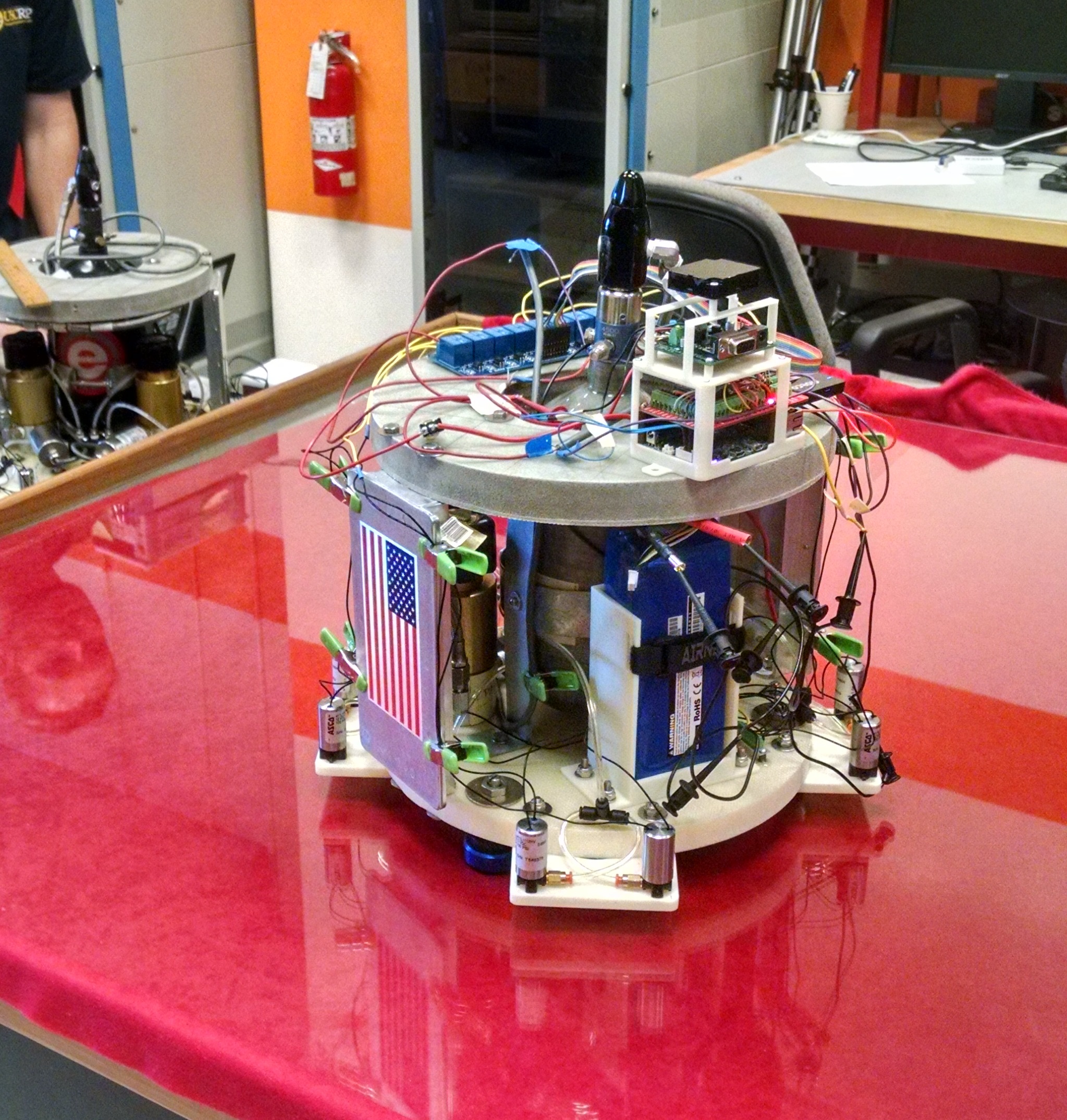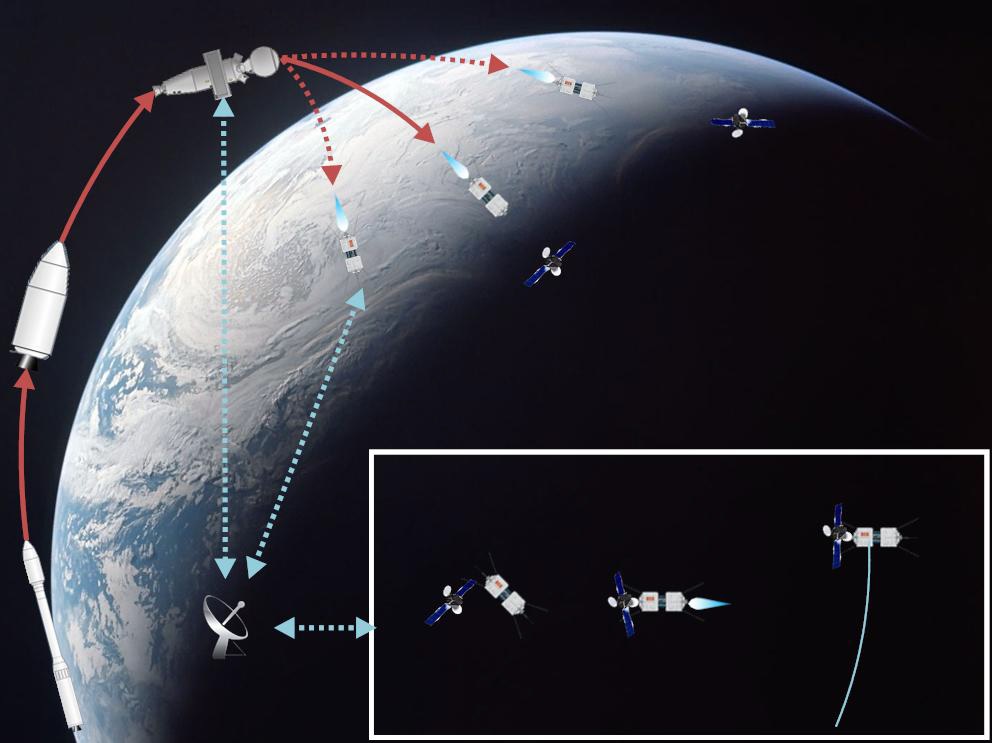Research Assistant
The research conducted by Dr. David Barnhart at SERC is focused on improving spaceflight technology to aid the advancement of the industry. The labpsace is conveniently located in Marina del Rey, which allows for direct collaboration with many of the industry companies in the Southern California area.
I worked on 2 projects while assisting at SERC:
The majortiy of my work was with the latter project, where I worked on the mechanical design and integration of parts for the system. Our multidisciplinary team built the platforms from scratch, and had completed an operational prototype by the time I left.

Senior Design Project
The objective of the project was to install an improved system to control the thermometer at the Los Angeles Memorial Coliseum. As a national historical landmark, the system could not include any changes to the structure of the stadium. The thermometer was originally designed to be controlled by hand, and our team devised an analog control system to automate the process.
Our system utilized a type J thermocouple to produce a voltage which was then fed through a circuit. The circuit included a potentiometer to record the current position of the needle, and op-amps to compare the voltages from the thermocouple and potentiometer. When there was a large enough difference in the voltages current was sent to the motor which turned the needle in the proper direction.
The motor was connected to the needle with a machined adapter and set screws to, avoiding any alterations to the structure of the building. The final project was attached to a mock-up of the Coliseum thermometer and was accurate wo within ± 3°F.

Launch & Capture Coordinator
This project was to plan all aspects of a space mission to remove 10 or more pieces of orbital debris from graveyard orbits for under $400 million. My responsiblities included designing the capture method, payload layout, launch vehicle, and launch profile for the mission. Our final design incorporated a mothership design with 12 drones used to de-orbit the debris, which is simulated in the diagram.
The system was to be launched on a Falcon 9 rocket from Vandenberg to limit the cost of transferring to a high inclination orbit. Using a high-inclination orbit and nodal regression for the mothership, full coverage of the Earth and its orbital debris was possible.
While many capture methods were researched, a soft kevlar net deployed via telescoping poles allowed for the strongest connection to debris of various sizes while still limiting weight of the drone. Once captured, the debris and drone would de-orbit using a combination of fuel and an electrodynamic tether to increase drag and pull it into the atmosphere to burn up. The final design of the mission had an estimated cost of $150 million, well below the $400 million max cost.
